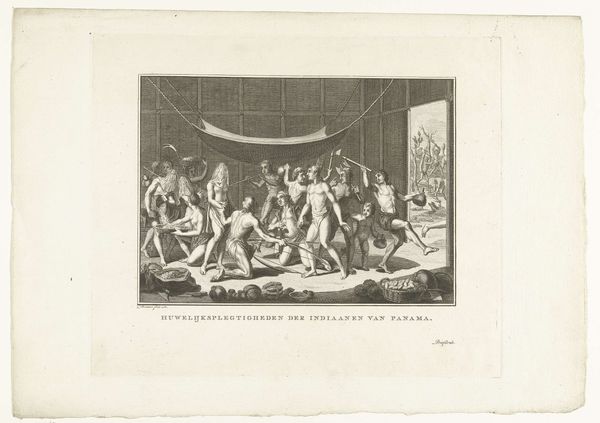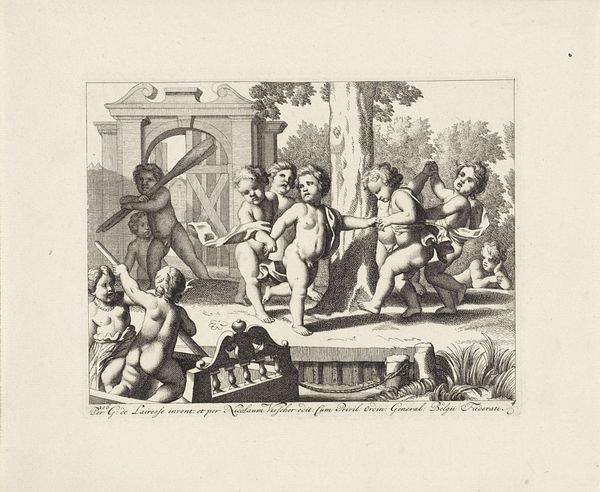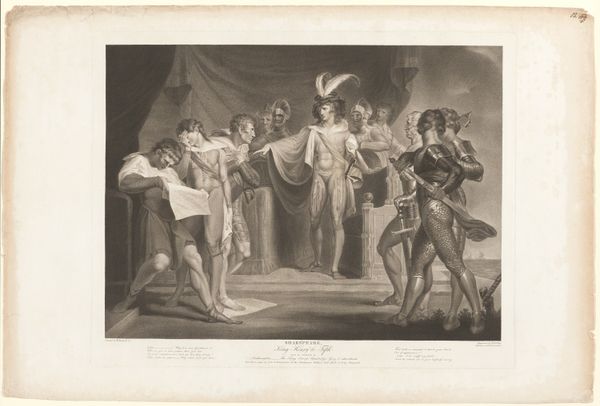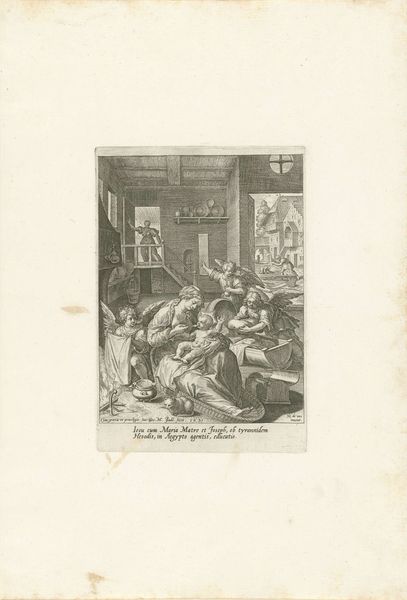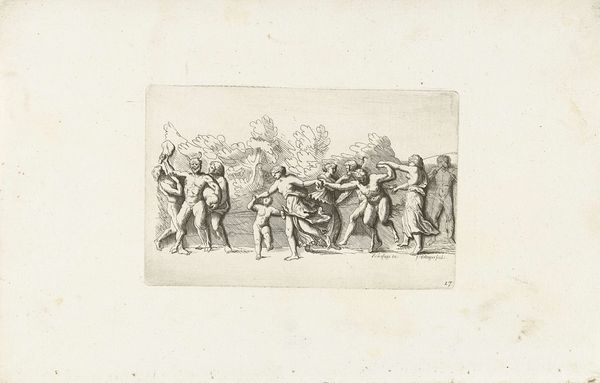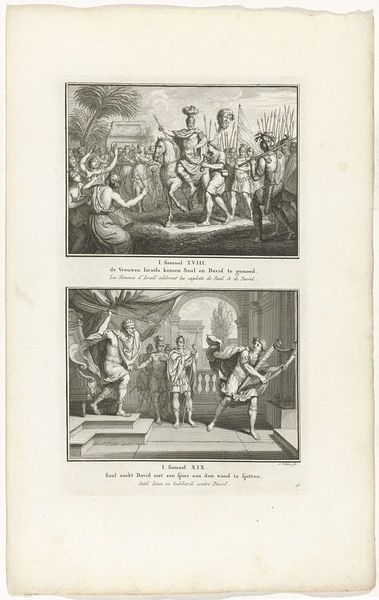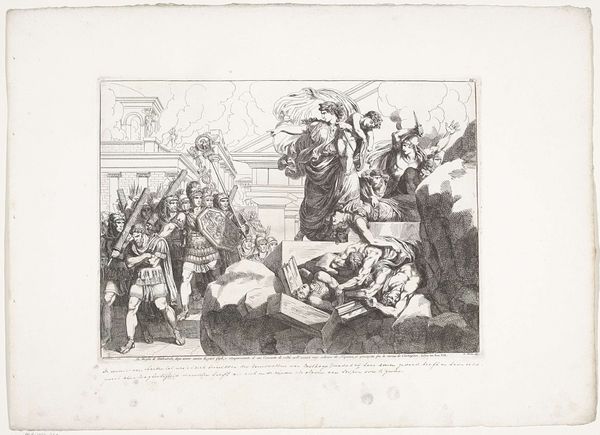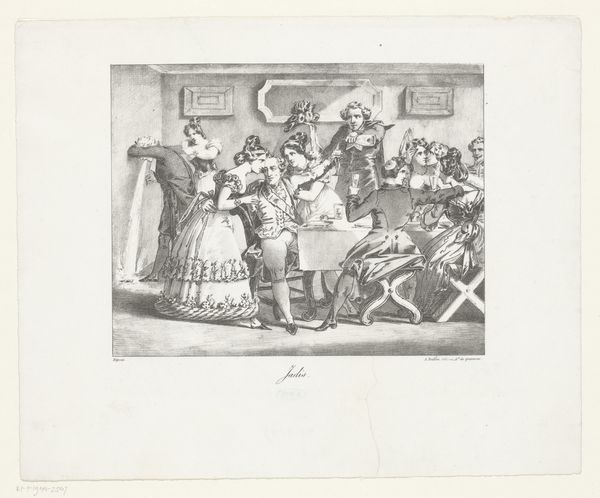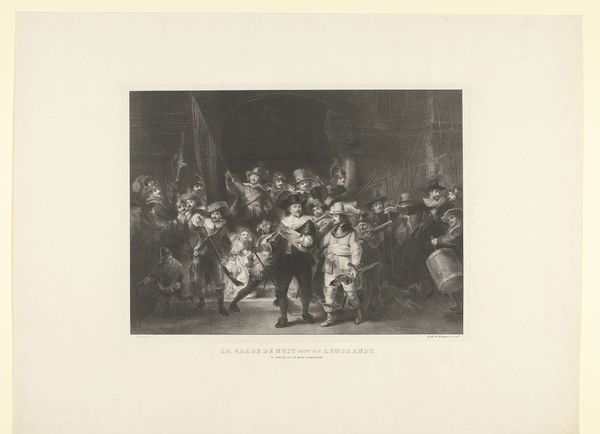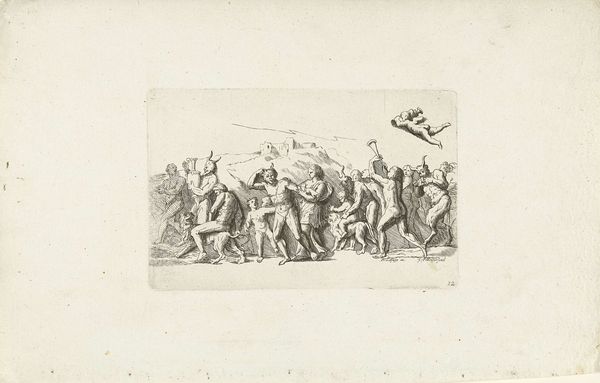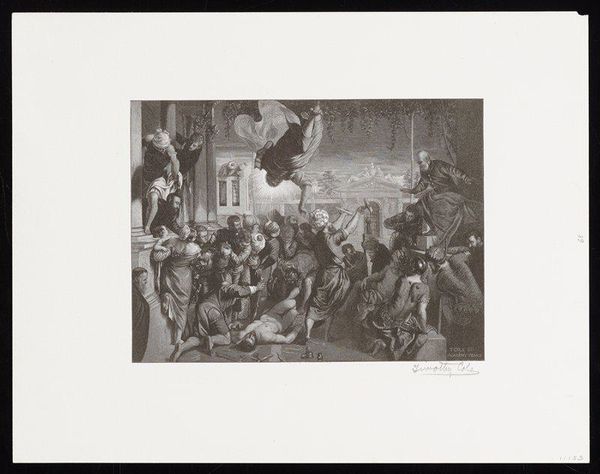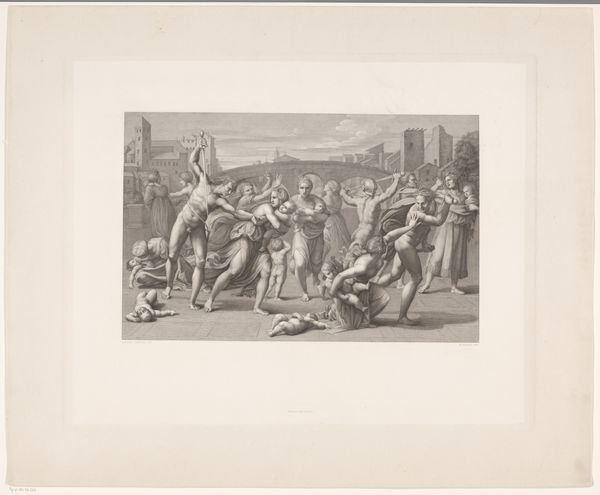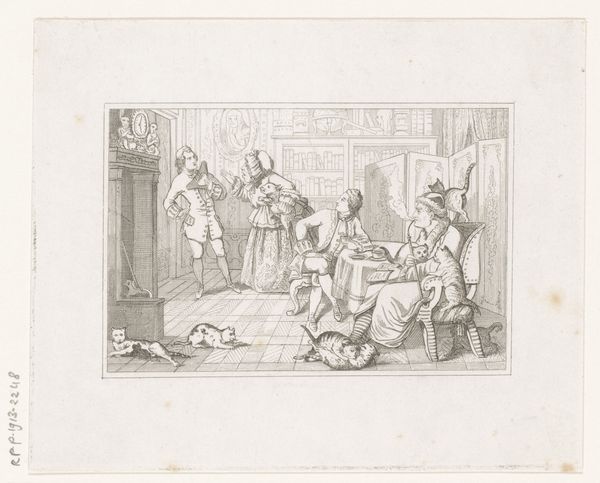
Wederdopers trekken tijdens een bijeenkomst hun kleren uit, 1535 1723 - 1818
0:00
0:00
print, engraving
#
narrative-art
# print
#
old engraving style
#
figuration
#
line
#
genre-painting
#
history-painting
#
nude
#
engraving
Dimensions: height 224 mm, width 274 mm
Copyright: Rijks Museum: Open Domain
Editor: This engraving, titled "Anabaptists undressing during a meeting, 1535," comes to us from Jan Lucas van der Beek, likely printed between 1723 and 1818. I find it unsettling. The figures are nude, but it doesn’t feel celebratory. What strikes you when you look at this? Curator: This image plunges us into the heart of religious and social turmoil. Van der Beek’s print doesn’t just depict a historical event; it offers a potent commentary on power, dissent, and the representation of marginalized groups. Notice the gaze – who is this image *for*? How does it function within the dominant discourse surrounding the Anabaptists? Editor: So, it's not just a depiction but an argument? Curator: Exactly. These prints were often deployed as propaganda. Consider the context: Anabaptists were seen as radical disruptors of social order. This image, made long after the events, likely reinforces that fear and othering. How does the artist use the figures' nudity, their expressions, to convey a specific message about this group? Is it sensationalizing their practices to demonize them? Editor: I see what you mean. It’s easy to see it just as a historical scene, but you're right, the way they're presented—it's definitely casting them in a negative light. Curator: And that’s crucial! We must analyze art’s power to shape historical narratives. What responsibility do we have when viewing such images today? How do we engage critically with the biases embedded within them? Editor: That's a powerful point. It really reframes how I see this piece. I came in thinking history, but it's more about interpretation and power. Curator: Precisely! Art acts as a mirror and a weapon. Examining its historical context empowers us to understand its enduring impact on shaping cultural perceptions and social injustices.
Comments
No comments
Be the first to comment and join the conversation on the ultimate creative platform.
